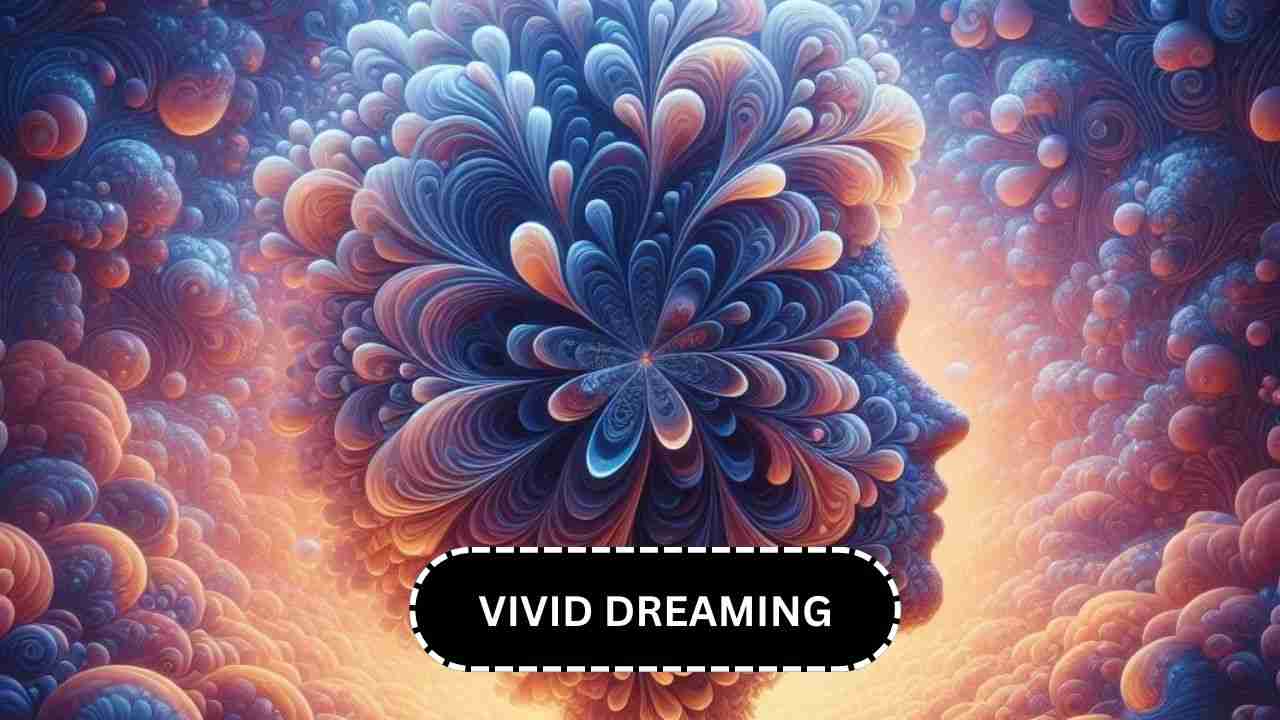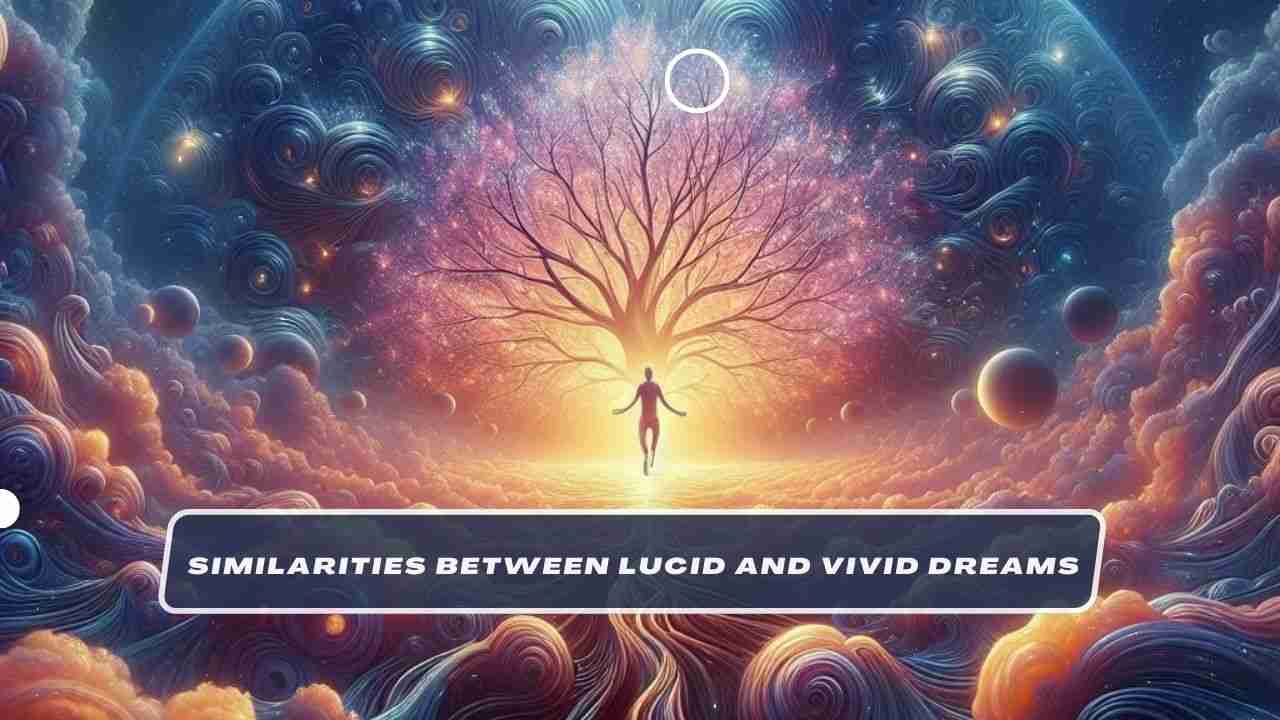Dreams have always fascinated and mystified us, serving as windows into our subconscious minds and offering glimpses of worlds beyond our waking reality. Among the myriad of dream experiences, two phenomena stand out: lucid dreams and vivid dreams.
While both types of dreams offer profound insights into the workings of our minds, they possess distinct characteristics and implications. In this exploration, we delve into the realms of lucid dreaming and vivid dreaming, shedding light on their definitions, differences, and significance.
Lucid dreaming, characterized by heightened awareness and the ability to control one’s dreams, represents a unique state of consciousness where dreamers navigate their imaginary landscapes with intention and clarity. Conversely, vivid dreams captivate us with their intense sensory experiences and emotional depth, offering vivid recollections upon waking.
Understanding the disparities between lucid and vivid dreams not only enriches our appreciation for the complexities of dreaming but also empowers us to harness the transformative potential of these nocturnal adventures.
Join us on this journey as we unravel the mysteries of lucid dreams versus vivid dreams, unlocking the secrets hidden within our subconscious minds.
Contents Inside
ToggleLucid Dreaming
Lucid dreaming is a remarkable phenomenon where dreamers become aware that they are dreaming while still immersed in the dream world. Unlike traditional dreams where the dreamer is a passive observer, lucid dreaming empowers individuals to actively participate in and manipulate their dream experiences. This heightened state of consciousness enables dreamers to recognize the dream as a construct of their own minds, granting them a sense of control over the dream narrative.
During a lucid dream, individuals may engage in a variety of activities, from flying through the sky to conversing with dream characters, all with a profound sense of awareness. This lucidity often manifests as a realization triggered by incongruities or anomalies within the dream environment, prompting the dreamer to question the reality of their experience.
While the exact mechanisms underlying lucid dreaming remain a subject of scientific inquiry, researchers have identified several techniques for inducing lucid dreams. These include reality checks, where individuals perform regular checks to confirm whether they are dreaming or awake, as well as mnemonic induction of lucid dreams (MILD) and wake-induced lucid dreaming (WILD), which involve mental exercises and entering a lucid state directly from wakefulness, respectively.
Beyond the realm of mere curiosity, lucid dreaming offers a plethora of benefits for those who explore its depths. Creatives often turn to lucid dreaming as a source of inspiration, harnessing the boundless creativity and freedom afforded by the dream world. Additionally, lucid dreaming has been associated with emotional healing and personal growth, providing a safe space for individuals to confront and resolve unresolved issues or fears.
As we delve deeper into the mysteries of lucid dreaming, we uncover not only the extraordinary capabilities of the human mind but also the profound implications for our waking lives. Lucid dreaming serves as a gateway to self-discovery, offering insights into our subconscious desires, fears, and aspirations. By cultivating the practice of lucid dreaming, we embark on a journey of exploration and empowerment, transcending the boundaries of our waking reality to unlock the limitless potential of our dreams.
Vivid Dreaming
Vivid dreaming captivates us with its immersive sensory experiences and lifelike portrayals of the dream world. Unlike the abstract and fragmented nature of some dreams, vivid dreams are characterized by their intense clarity, vivid imagery, and heightened emotional engagement. In these dreams, the sights, sounds, and sensations feel remarkably real, blurring the line between the dream world and waking reality.
While the mechanisms underlying vivid dreaming are not fully understood, several factors can influence the vividness and richness of dream experiences. These include individual differences in dream recall and perception, as well as external factors such as sleep quality, stress levels, and emotional state. Additionally, the content of vivid dreams may be influenced by personal experiences, memories, and subconscious desires, giving rise to a diverse array of dream themes and narratives.

Common themes in vivid dreams encompass a wide spectrum of experiences, ranging from fantastical adventures to mundane occurrences from daily life. Dreamers may find themselves navigating surreal landscapes, interacting with familiar or unfamiliar individuals, or reliving past events with startling clarity. The emotional intensity of vivid dreams can vary widely, evoking feelings of joy, fear, sadness, or excitement that linger long after waking.
While vivid dreams can be awe-inspiring and exhilarating, they may also pose challenges for some individuals. Intensely vivid or emotionally charged dreams can disrupt sleep and contribute to feelings of fatigue or distress upon waking. Additionally, recurring vivid dreams with disturbing or unsettling content may warrant further exploration and interpretation to uncover underlying psychological or emotional issues.
Despite the potential challenges, vivid dreaming offers valuable insights into the complexities of the human mind and the intricacies of the dream experience. By embracing the vividness of our dreams, we gain access to a rich tapestry of experiences and emotions that enrich our lives and deepen our understanding of ourselves. Whether we find ourselves soaring through the skies or navigating the depths of our subconscious, vivid dreaming reminds us of the boundless imagination and creativity that reside within us all.
Key Differences Between Lucid and Vivid Dreams
These are some Key Differences Between Lucid and Vivid Dreams:
Awareness and Control
Lucid Dreams: In lucid dreams, individuals are consciously aware that they are dreaming and can often exert varying degrees of control over the dream narrative and environment.
Vivid Dreams: In contrast, vivid dreams do not necessarily involve conscious awareness of the dream state or control over the dream content. While vivid dreams are characterized by intense sensory experiences, the dreamer may not actively realize they are dreaming or have the ability to manipulate the dream scenario.
Clarity and Intensity
Lucid Dreams: Lucid dreams are known for their heightened clarity and vividness, with dreamers experiencing the dream world with exceptional realism and detail.
Vivid Dreams: Vivid dreams also exhibit vivid imagery and sensory experiences, but the level of clarity and intensity may vary. While some vivid dreams may be exceptionally clear and lifelike, others may be more hazy or fragmented.
Emotional Engagement
Lucid Dreams: Emotions in lucid dreams can range from profound euphoria to intense fear, with dreamers often experiencing a heightened emotional connection to the dream narrative.
Vivid Dreams: Similarly, vivid dreams evoke strong emotional responses, but the emotional engagement may occur without the dreamer’s conscious awareness of the dream state. Emotions in vivid dreams can be just as intense and immersive as in lucid dreams.
Cognitive Impact
Lucid Dreams: Lucid dreaming has been associated with cognitive benefits such as enhanced problem-solving skills, creative inspiration, and emotional regulation. The conscious awareness and control in lucid dreams may contribute to these cognitive benefits.
Vivid Dreams: While vivid dreams offer profound emotional and sensory experiences, their cognitive impact may vary depending on the individual’s interpretation and integration of dream content into waking life. Vivid dreams can serve as sources of insight and inspiration but may not necessarily provide the same level of cognitive stimulation as lucid dreams.
Understanding these key differences between lucid and vivid dreams illuminates the diverse nature of the dream experience and highlights the unique qualities and potentials of each dream state. Whether we find ourselves lucidly exploring boundless dreamscapes or vividly immersed in the depths of our subconscious, dreams continue to fascinate and intrigue us, offering glimpses into the mysteries of the human mind.
Similarities Between Lucid and Vivid Dreams
Here are some similarities between lucid and vivid dreams:

Vividness of Sensory Experience
Both lucid and vivid dreams are characterized by intense sensory experiences, including vivid imagery, sounds, and sensations. In both types of dreams, dreamers may perceive the dream world with exceptional clarity and realism, immersing themselves in a rich tapestry of sensory stimuli.
Potential for Emotional Depth
Lucid and vivid dreams evoke strong emotional responses, with dreamers often experiencing a wide range of emotions during their dream experiences. Whether lucidly navigating a dream landscape or vividly reliving past memories, emotions in dreams can be just as intense and immersive, providing profound insights into the dreamer’s emotional state and innermost desires.
Role in Memory Consolidation
Both lucid and vivid dreams play a role in memory consolidation and processing. Dreams, whether lucid or vivid, often incorporate elements of the dreamer’s waking experiences and memories, serving as a mechanism for the brain to organize and integrate new information. This process of memory consolidation helps solidify learning and memory retention, contributing to overall cognitive function and well-being.
By recognizing these similarities between lucid and vivid dreams, we gain a deeper appreciation for the complexities of the dream experience and the profound impact that dreams can have on our lives. Whether we find ourselves lucidly exploring the realms of possibility or vividly immersed in the depths of our subconscious, dreams continue to inspire wonder and intrigue, inviting us to explore the secrets of the human psyche.
Practical Tips for Enhancing Dream Experiences
Here are some Practical Tips for Enhancing Dream Experiences:
Keeping a Dream Journal
Keep a dream diary by writing down your dreams as soon as you wake up. Write down as much detail as possible, including sensory experiences, emotions, and any recurring themes or symbols. Keeping a dream journal helps improve dream recall and encourages reflection on the content and patterns of your dreams over time.
Practising Reality Checks
Incorporate reality checks into your daily routine to increase self-awareness and promote lucid dreaming. Perform simple reality checks throughout the day, such as looking at your hands, questioning your surroundings, or trying to push your finger through your palm. By making reality checks a habit, you’ll be more likely to perform them in your dreams, leading to lucidity.
Engaging in Mindfulness Techniques
Practice mindfulness and meditation techniques to cultivate a heightened state of awareness and presence, both during waking life and in dreams. Mindfulness exercises, such as deep breathing, body scans, and focused attention on the present moment, can help improve dream awareness and promote lucidity.
Exploring Lucid Dreaming Supplements
Consider incorporating lucid dreaming supplements or aids into your bedtime routine to enhance dream experiences. Supplements such as galantamine, choline, or vitamin B6 have been reported to increase dream vividness and promote lucidity. However, consult with a healthcare professional before trying any new supplements to ensure safety and efficacy.
By implementing these practical tips for enhancing dream experiences, you can cultivate a deeper connection to your dreams and unlock the transformative potential of the dream world. Whether your goal is to achieve lucidity, improve dream recall, or simply explore the depths of your subconscious, these techniques offer valuable tools for enhancing the richness and meaning of your dream experiences.
Also Read: 5 Best Binaural Beats For Lucid Dreaming.
Conclusion
In conclusion, the exploration of lucid dreaming versus vivid dreaming reveals the fascinating intricacies of the human mind and the boundless potential of the dream experience. While lucid dreaming offers the thrill of conscious awareness and control within the dream world, vivid dreaming captivates us with its intense sensory experiences and emotional depth. Despite their differences, both types of dreams share commonalities, including vividness of sensory experience, potential for emotional depth, and role in memory consolidation.
As we navigate the realms of lucid and vivid dreaming, we are reminded of the profound connection between dreams and waking life. Dreams serve as mirrors reflecting our subconscious desires, fears, and aspirations, offering valuable insights into the complexities of the human psyche. By embracing the practice of lucid dreaming, keeping a dream journal, and engaging in mindfulness techniques, we can deepen our understanding of ourselves and unlock the transformative power of our dreams.
Whether we find ourselves lucidly navigating the dream landscape or vividly immersed in the depths of our subconscious, dreams continue to inspire wonder and intrigue, inviting us to explore the mysteries of the human mind. With each dream experience, we embark on a journey of self-discovery, uncovering hidden truths and unlocking the limitless potential of our imagination.
As we bid farewell to the dream world and return to waking reality, let us carry with us the lessons learned and insights gained from our nocturnal adventures. Whether awake or asleep, may we continue to embrace the wonder and magic of the dream experience, finding inspiration, healing, and growth along the way. Dream on, for in the realm of dreams, anything is possible.









